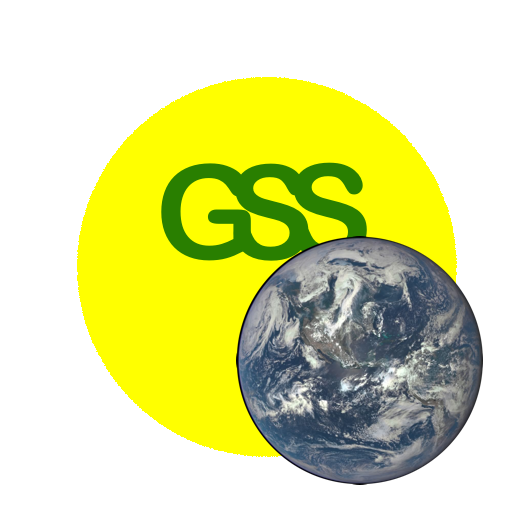Category: Global Systems Science
Online curriculum books for high school science pertinent to key societal issues
AC1. Cosmic Cataclysms
{ A Changing Cosmos Contents } I. Mass Extinction We normally think of things in space as remote—not really affecting things around us. But there are some types of cosmic events that could really mess things up badly for us. In fossil records, there are many instances of species going extinct—apparently unable to cope with […]
A Changing Cosmos
A Changing Cosmos is the latest edition of the Hands-On Universe (HOU) astronomy curriculum series. It is a compilation in a single book as the “Best” of the seven original HOU high school curriculum books developed by TERC*. See also: Solar System Science. Contents Chapter Titles Investigations Stay Current 1. Cosmic Cataclysms 1.1 Down2Earth Crater Impact Calculator Chapter […]
Acknowledgements
{ GSS Books } The people who made the Global Systems Science books possible On this page: GSS Staff Reviewers by Book GSS Advisors Thanks to Teacher Reviewers Sources of Support Staff – Reviewers – Advisors – Teachers – Support GSS Staff Director: Alan Gould Series Authors: Richard Golden Alan Gould Cary SneiderJohn Michael […]
Bibliography for A New World View
{ A New World View Contents } { All GSS Books } Our sources, categorized by topic Global Environmental Change Brown, Lester R., Building a Sustainable Society, N.Y.: W.W. Norton & Company, 1981. Brown, Lester R., Flavin, Christopher, and Postel, Sandra, Saving the Planet: How to Shape an Environmentally Sustainable Global Economy, New York, London: […]
AN6C. Stay Current—Towards a Sustainable World
2025-11-17. Prescribed burning helps store forest carbon in big, fire-resistant trees. By Kara Manke, UC Berkeley News. Excerpt: After more than a century of fire suppression in California’s forests, mounting evidence shows that frequent fire — through practices like prescribed fire or Indigenous cultural burning — can improve forest health, increase biodiversity and reduce the […]
AN5C. Stay Current—Losing Tropical Rainforests
Staying current for Chapter 5 { A New World View Contents } Non-chronological items: Canopy in the Clouds – A project that uses immersive multimedia from the tropical montane cloud forests of Monteverde, Costa Rica as a platform for earth and life science education. Includes 26 lessons on topics ranging from science process skills to soil […]
AN4C. Stay Current—Field Trip to Wind River
Staying current for Chapter 4 { A New World View Contents } 2022-04-29. A Lidar’s-Eye View of How Forests Are Faring. By Van R. Kane, Liz Van Wagtendonk and Andrew Brenner, Eos/AGU. Excerpt: Success in Yosemite is driving the wider use of lidar surveys to support forest health and wildfire resilience, study wildlife habitats, and monitor water resources. […]
AN3C. Stay Current—Case Study: The Headwaters Controversy
Staying current for Chapter 3 { A New World View Contents } 2015-12-10. The northern spotted owl is in danger again. And this time it’s from another owl. By Darryl Fears, the Washington Post. For GSS A New World View chapter 3. Excerpt: …Across that gorgeous emerald range, federally protected northern spotted owls and invasive barred […]
AN2C. Stay Current—A History of Forest Use In the Pacific Northwest
Staying current for Chapter 2 { A New World View Contents } To: Non-chronological resources…. 2024-02-15. Seeking clear skies and quiet, astronomers put telescopes on U.S. Moon lander. [https://www.science.org/content/article/seeking-clear-skies-and-quiet-astronomers-put-telescopes-u-s-moon-lander] By DANIEL CLERY, Science. Excerpt: Small scopes on IM-1 mission would be first optical and radio observatories on the lunar surface. …Astronomers have long eyed the […]
AN1C. Stay Current—What Is Global Systems Science?
Articles from 2005–present 2025-07-20. 4 minute video about Apollo 11 Moon Landing. By Heather Cox Richardson. https://www.youtube.com/watch?v=Xh9-t8xqviM. 2025-03-20. Cold Seeps and Coral Reefs in Northern Norway: Carbon Cycling in Marine Ecosystems With Coexisting Features. By Muhammed Fatih Sert et al, JGR Biogeosciences. [Great example of the complexity of global systems!] Plain language summary: Cold seeps […]

